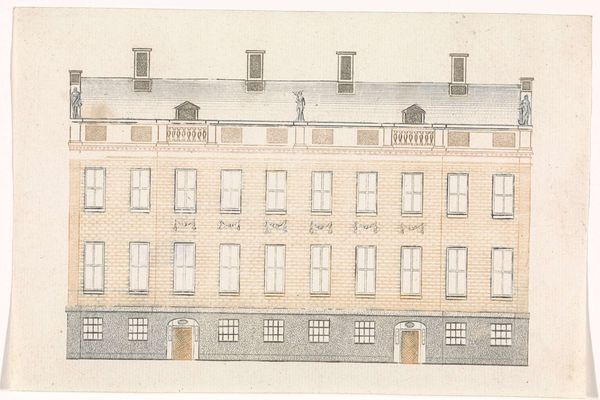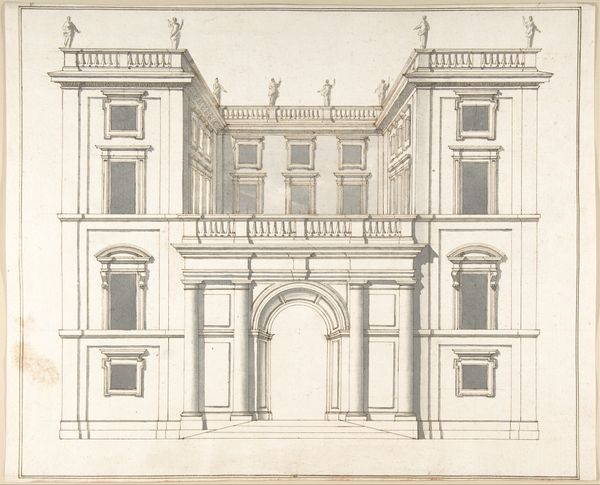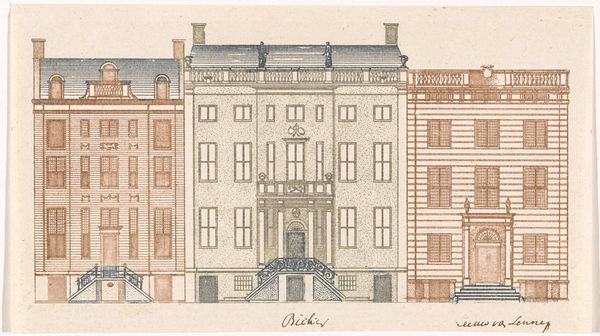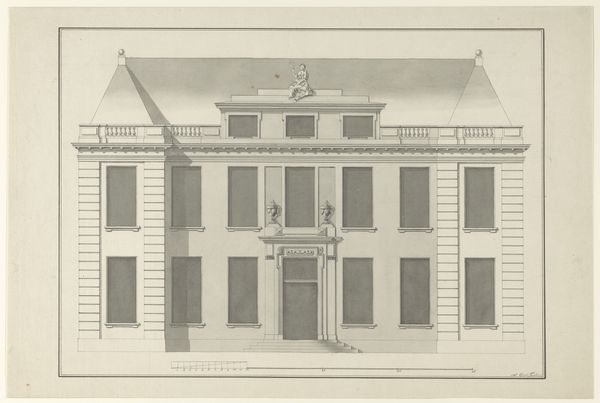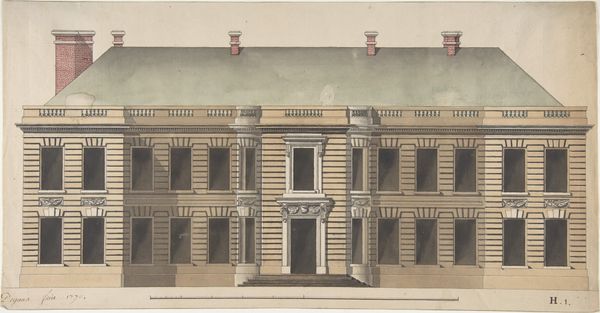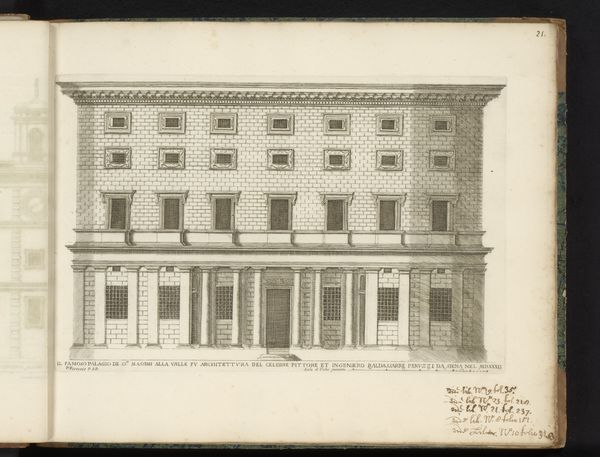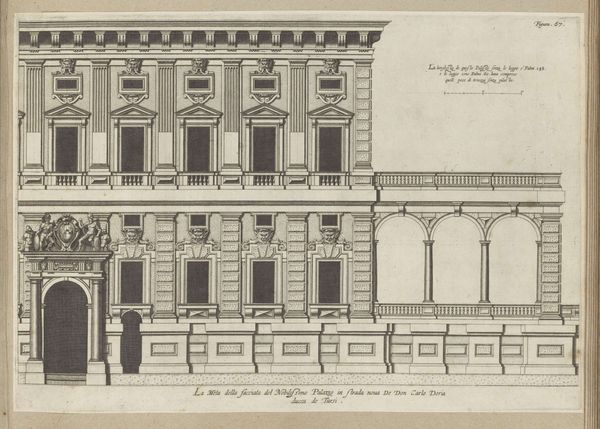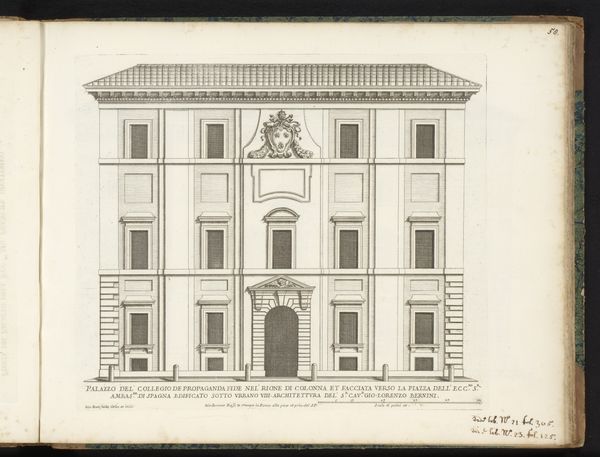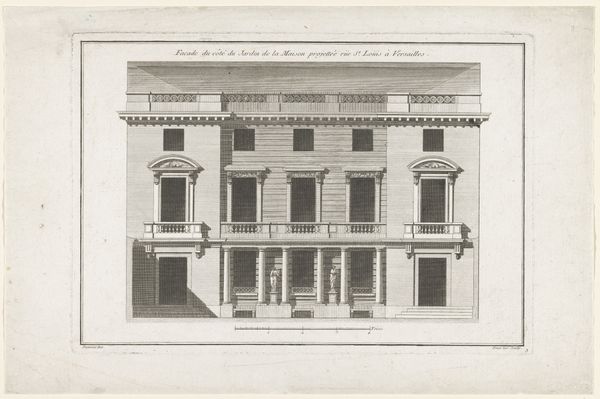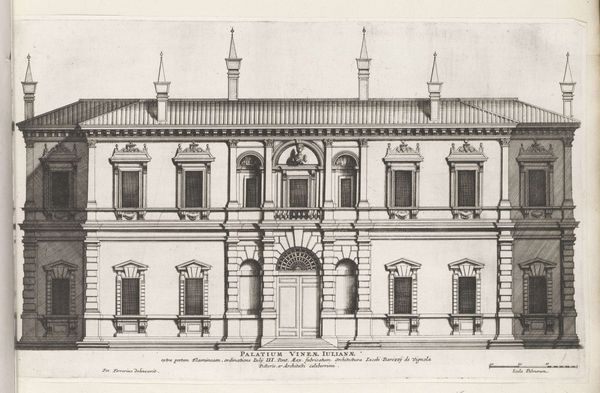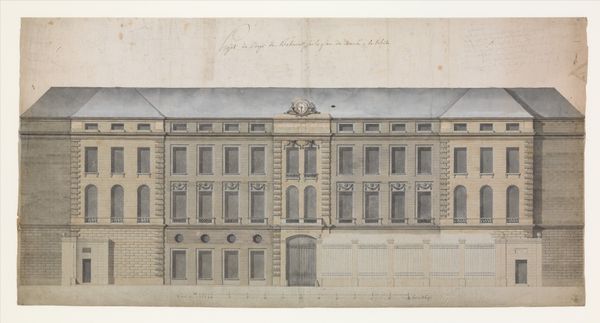
drawing, print, etching, architecture
#
drawing
#
baroque
# print
#
etching
#
landscape
#
etching
#
architectural drawing
#
architecture
Dimensions: height 118 mm, width 196 mm
Copyright: Rijks Museum: Open Domain
Curator: Here at the Rijksmuseum, we have "Amsterdamse grachtenhuizen aan de Keizersgracht 738-730," an etching and print architectural drawing made anonymously between 1696 and 1706, showcasing baroque canal houses. Editor: Immediately striking is its restrained palette; the light etching creates a delicate, almost ethereal impression of the architecture. It feels quite formal. Curator: Indeed. Observe the meticulous rendering; the facade becomes an exercise in mathematical precision, and the rigorous geometry certainly embodies the formal characteristics of Baroque architectural drawings of the period. Each window, each balustrade, seems perfectly aligned within a clear and well-ordered plan. Editor: While I appreciate the formal elements, the image speaks volumes about Amsterdam's social hierarchy during that time. These canal houses, built on prime real estate along the Keizersgracht, visually demonstrate the immense wealth concentrated within the Dutch elite. They symbolize a societal power structure reflected directly in the urban landscape. Curator: To take your point, the drawing showcases how architectural style expressed power, where balanced compositions and restrained ornamentation symbolized civic pride and personal fortune. See how the facade emphasizes order and rational design, reflecting a period of philosophical and scientific advancements? Editor: Absolutely. But, those figures perched atop each building, they appear solitary and strangely passive overlooking the canal—suggesting something about class and control perhaps? They quietly oversee the bustling merchant city that supported this elite lifestyle. The artistry itself could reinforce existing societal hierarchies by portraying them as natural and inevitable. Curator: Perhaps, but I see the craftsmanship—the exquisite linework which provides not just representation, but a complex play of shadow and light that adds dimension and refinement, elevating architectural drawing to an art form in its own right. Editor: And, isn't it important that these houses were designed by a nameless hand; they reveal not just wealth and status, but speak to hidden voices and histories as well. Curator: The anonymity might also signal that architectural plans, even aesthetically pleasing ones, were viewed more as documents, subordinate to the architectural expression itself. The piece remains fascinating to contemplate both its intended purpose and aesthetic merit. Editor: Indeed. A visual echo that asks profound questions about wealth and cultural values across time.
Comments
No comments
Be the first to comment and join the conversation on the ultimate creative platform.

